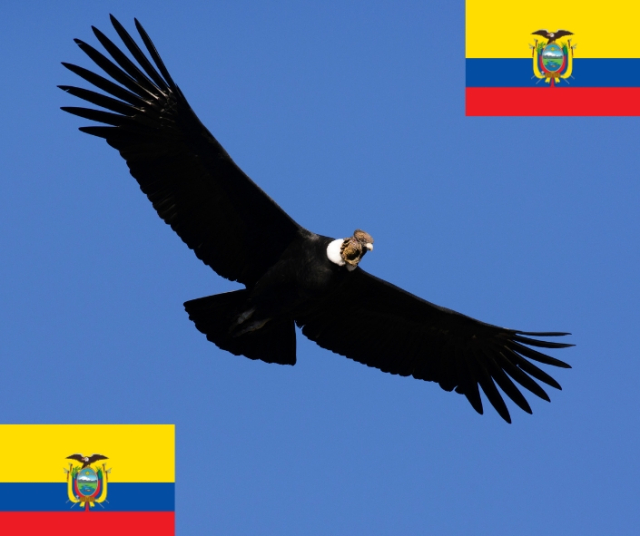Ecuador, a country located in the South American region, is famous for its amazing biodiversity, making it one of the richest places in terms of plant and animal species per square kilometer in the world. Among these species are some truly rare and fascinating species that capture the imagination of biologists, ecologists and nature enthusiasts. In this article, we will explore some of the most unique species that we can find in Ecuador, describing their unique characteristics and their function in local ecosystems.
The Andean condor (Vultur gryphus).
The Andean condor is one of the largest and most majestic birds in the world, and is the national symbol of Ecuador. With a wingspan that can exceed three meters, this impressive bird of prey is found in the highest peaks of the Andes mountain range. Its role in nature is crucial as a scavenger, helping to clear the landscape of dead animals and decompose organic matter, contributing to the balance of the ecosystem.
The spectacled bear (Tremarctos ornatus).
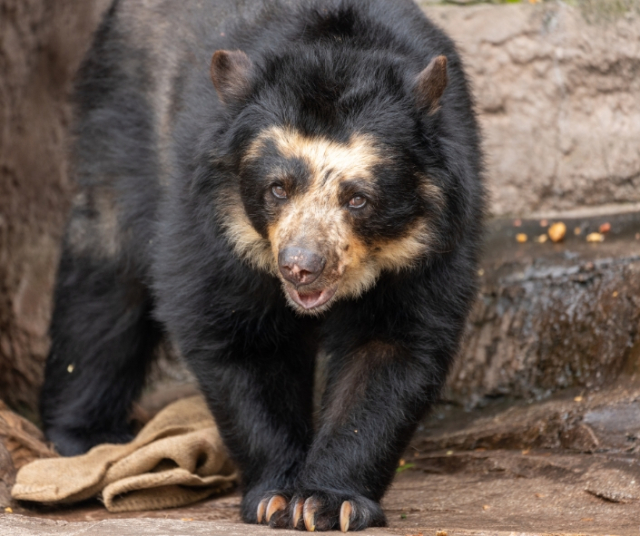
The spectacled bear is the only bear native to South America and is found primarily in the cloud and mountain forests of the Andes. Its distinctive feature is the white rings around the eyes, which give it its name. This bear plays an important role in seed dispersal, as it feeds on a variety of fruits and plants, thus helping the regeneration of forests.
The fiddler crab (Harpago chiragra).
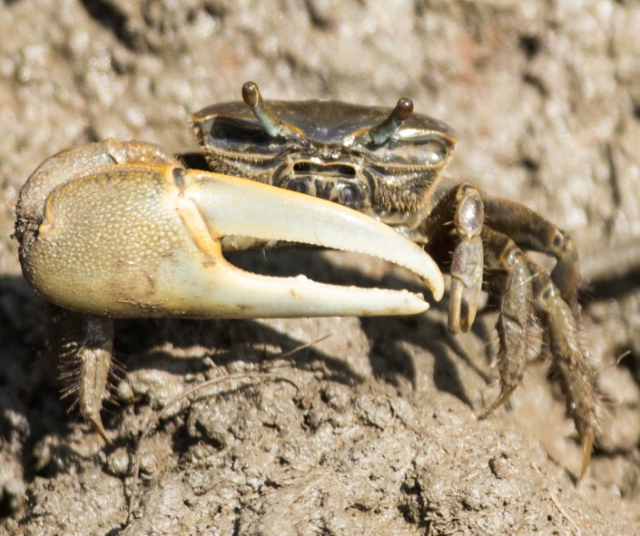
The fiddler crab is a species of crustacean endemic to the Galapagos Islands, an Ecuadorian archipelago famous for its incredible biological diversity. This crab gets its name from the violin-shaped markings on its shell. Although primarily herbivorous, it plays an important role in the food chain as prey for seabirds and other coastal predators.
The Ecuadorian glass frog (Centrolene prosoblepon).

The Ecuadorian glass frog is a unique amphibian species found in the cloud forests of the country's mountainous regions. Its name comes from its translucent skin that allows you to see its internal organs. These frogs play an important role in controlling insect populations, as they feed on a variety of insects and other invertebrates.
The howler monkey (Alouatta sp.).
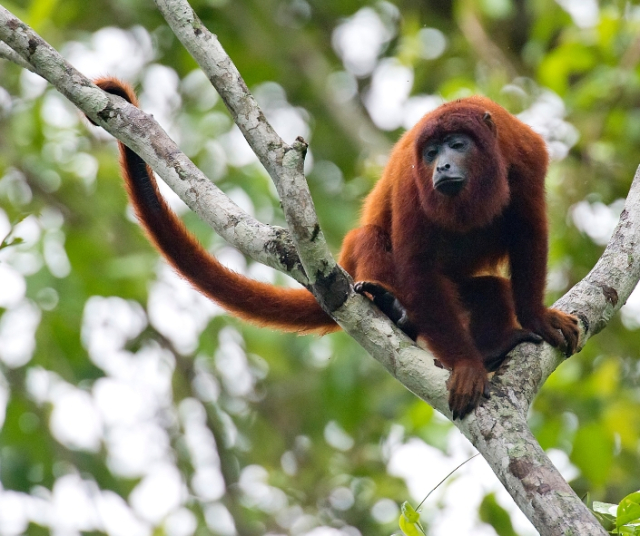
Howler monkeys are primates that live in the tropical forests of Central and South America, including several regions of Ecuador. They are known for their powerful vocalizations, which can be heard from miles away. Howler monkeys are herbivores and play an important role in seed dispersal as they feed on a variety of fruits and leaves. Additionally, they are prey for various predators, making them a vital link in the tropical forest food chain.
The giant anteater (Myrmecophaga tridactyla).
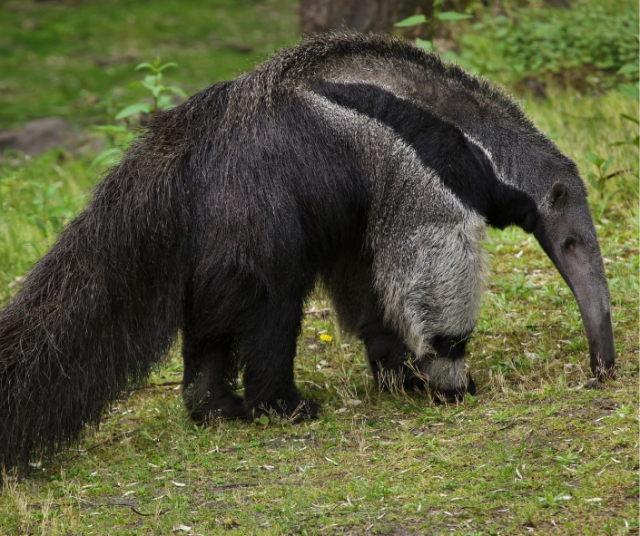
The giant anteater is a species of insectivorous mammal found in several regions of South America, including parts of Ecuador. It is known for its long snout and sticky tongue, which it uses to feed on ants and termites. Although it is a solitary and shy animal, the giant anteater plays an important role in controlling insect populations, thus helping to maintain the balance of the ecosystems in which it lives.
The harpy eagle (Harpia harpyja).
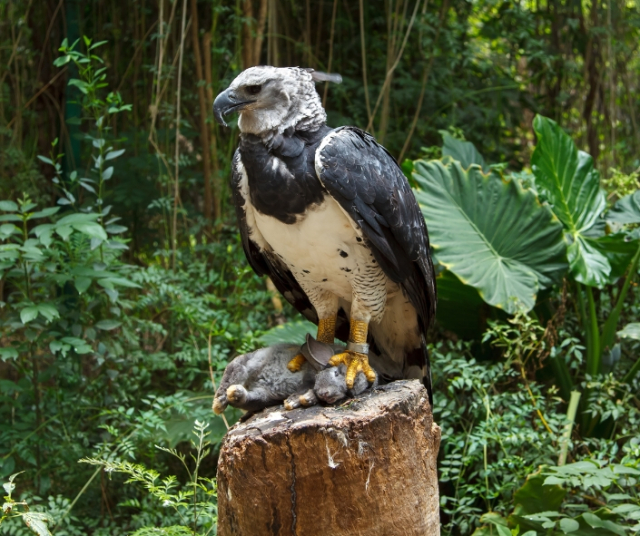
The harpy eagle is one of the largest and most powerful birds of prey in the world, and is found in the rainforests of Central and South America, including some regions of Ecuador. With a wingspan that can reach up to two meters, this majestic bird is a dominant predator in its habitat. Their diet includes a variety of small and medium-sized mammals, as well as birds and reptiles. As a top predator, the harpy eagle plays a crucial role in controlling prey populations, helping to maintain the balance of rainforest ecosystems.
The Galapagos giant tortoise (Chelonoidis nigra).

The Galapagos giant tortoise is an iconic species found in the Galapagos Islands archipelago, a territory of Ecuador. These turtles are famous for their longevity and impressive size, with specimens that can reach up to 1.8 meters in length and weigh more than 400 kilograms. They are herbivores and play an important role in seed dispersal and maintaining vegetation on the islands. Additionally, they are a key species in conservation history, as their population has been the subject of intense protection and recovery efforts due to the threat of hunting and habitat loss.
Ecuador's biodiversity is simply astonishing, and these rare species are just one example of the incredible variety of life found in this South American country. Each of these species plays a unique and crucial role in its ecosystem, contributing to the stability and balance of nature. Protecting and conserving these species is essential to guarantee the health and prosperity of Ecuadorian ecosystems and for future generations who will be able to enjoy their beauty and uniqueness.
